Chris Baty's Blog, page 131
December 14, 2016
How to Ease Into the Editing Process
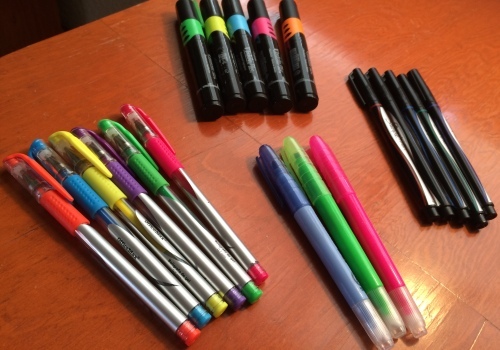
Everyone has a different NaNoWriMo experience. We’ve asked some wonderful NaNoWriMo writers to share theirs. Today, Tomehbell, NaNoWriMo participant and Municipal Liaison, shares her tips for looking over the novel you wrote during November and getting ready for the editing job ahead:
Well, you managed to survive NaNo 2016. Congratulations are in order!
2016 has been a roller coaster of a year: some of us took some hits and a few of us had some misses, so as we close out their year I want you to take the time to pat yourself on the back and then grab some much needed and very well deserved R&R. Take the entire month of December and maybe part of January. After that, it’s time to roll up your sleeves and tackle your rewrite during the “Now What?” months (if you finished). If you didn’t finish your novel, now is the time to get those last chapters written.
All writers will you tell you there isn’t one specific way to write, and there isn’t. You can be a punster, or crank out the next great American novel, or you can weave an intricate plot like Ms. Rowling. However, there is a set formula for rewriting your novel. There aren’t any shortcuts when we get to this phase of novel writing. If you’re aiming to polish your novel up to be the best that it can be–maybe even to be published–this is the way to start:
Step 1: Read your novel.Print out your novel, grab some hot chocolate and a Netflix account, and read your novel from start to finish. No, this is not the moment for beta readers. That is the worst thing you can do right now. Your story, no matter how brilliant you think it’s going to be, is not ready for prying eyes. It’s a sure-fire confidence killer. You wrote a novel in 30 days without a care in the world. You don’t want to air your dirty laundry to world just yet.
Have a highlighter and different colored pens close at hand after you’ve taken the time to sit down and do a read through. I like to use red pens for grammar and punctuation mistakes. Purple is for plot holes and continuity mistakes. Pink is for character misses and problems. Does my sidekick suddenly have an attitude readjustment for no reason at all? Green is used for setting mishaps. Did I say the MC house was on Meadowview Lane in Chapter 1 and then in Chapter 20 she’s on Buttercup Circle? My yellow highlighter is for things that just need to be rewritten. Clunky sentences, bloated descriptions, roundabout metaphors, things like that.
Step 2: Don’t read your novel.After you finish your first rewrite, set it down and walk away. Yes, this is really the second step. Reward yourself for making it through step one. Read a few books you’ve been putting on the back burner. Learn how to roll fondant, and finish the last season of Criminal Minds.
Steps 3–5: Rinse and Repeat. You are going to have to read, rewrite, walk away and then get back in there. It’s going to be tedious and you are going to burn out. It’s important that in between every repeat cycle you take the time to step back and reward yourself for all of your hard work. Now is the time to enlist your troupe of beta readers. You’ve polished your lump of coal into a diamond and your novel is ready for presentation.
I caution against using friends and family members as beta readers. They can be your worst critiques and your best confidence killers. Join a writing or critique group at your local library, or on Facebook or Tumblr. Give them a set of questions to answer and a timeline to get back to you. After that it could be another rinse and repeat round or it could be time to look for an agent or publisher, if that is the route you are seeking. If not, sit back and enjoy all of your hard work and just have a tall glass of cold milk.

Tommehbell wrote her first story after she watched Michael Jackson moonwalk across her TV screen. She grew up in Germany as the oldest child of military parents. In 2010 she penned her first NaNo novel and the following year she became an ML and site mod. Since that first NaNo attempt Tommeh has received her BA and her first Masters. Currently she is working on a library science and information Masters and getting her MA manuscript published.
You can follow her on Twitter, Tumblr, and Instagram.
Top photo by Flickr user Raul Pacheco-Vega.
December 12, 2016
What I’ve Learned During 12 Years of NaNoWriMo

Everyone has a different NaNoWriMo experience. We’ve asked some wonderful NaNoWriMo writers to share theirs. Today, Brian Wakeling, NaNoWriMo participant, shares the tale of his twelve-year-long NaNoWriMo adventure:
It’s the 18th of November 2006, and I have just crossed the finish line of my second-ever NaNo, the first in what I am just realizing will be a series. I’m feeling pretty good: I was recently interviewed for NaNoRadio, and I think that the six or seven thousand words left in this story will be fairly easy. I plan to relax for the last week of November, while I mull over ideas for what the second book will be about.
It’s the 15th of November 2016, and I have just crossed the finish line of my twelfth NaNo, the ninth and final book of the series I started all those years ago. I am feeling pleased that I have done enough for my PDF certificate, but I am worried whether I’ll be able to fit everything the story needs in under another 15,000 words or so. In the end, my final word count is over 78,000 words, and I am wondering how the fish I got here.
In the decade I’ve been writing the Have Sword & Sorcery: Will Travel™ series, I’ve amassed over 600,000 words, accumulated about 300KB of notes (most of them in spreadsheet format), and around 20MB of maps and drawings (not including the cover art). I’ve also spent about £1500 on getting copies printed, publicity material, and going to places to sell the copies–and I’ve nowhere near made my money back. I never thought that when I started back in 2006, I would be sitting atop a pile of my own work wondering: What do I do next?
Good question.
There are any number of bits of advice about writing professionally out there, most of them including something like, “Write half a million words. Throw them away. Now you are ready to be a writer.” I’ve written my half-a-million words, and then some, and I don’t want to throw them away. Like them or not, good or not, those half-million words were an essential learning process, and if you don’t keep those around it’s harder to avoid mistakes.
You can look at all those words you wrote to find out how you got out of a similar situation before, or to rewrite some dialogue that would fit another character better. Or you can bring them out occasionally to laugh at how clumsy your pen once was. Besides, I’ve been writing so long that HS&S:WT aren’t all my half-a-million words, and the last three books will all be after the magic 500K.
I wrote a pep-talk for NaNo on my blog last year (must get all the badges, y'know), in which I examined the idea of success and trying for it. I’ve gone through several degrees of success during the course of writing the series. In the process, I’ve answered questions like:
Can I get the characters through the book without killing all of them? (Yes.)Is it possible to write a book while your girlfriend is visiting from Ireland? (Yes.) Can you finish a NaNo book fresh from a breakup? (Yes, although it’s not pleasant and it does color your writing.) Can you successfully set up plot elements four books before they appear? (Given how much stuff I crammed in to the last three books, yes, apparently.) Can I set myself ever more ludicrously high writing targets and beat them? (Yes, to the extent that my stats for this year’s book are off the charts.)And it doesn’t matter if you can say the same to all those things or not. All that matters is that you succeeded in achieving your own targets.
So, what next? For me, edit and prep for publication, try to get a foot in the door of professional writing, and see if I can think of something for NaNo2017. For you? Only you can answer that. Good luck.

Brian Wakeling was born in the Midlands, bred in the Home Counties, raised in Yorkshire, and went to university in Edinburgh, where he studied fencing and drinking at QMUC, from where he was finally kicked out for the second time in May 2000. He has been writing in one form or another for most of his life–he also acts and spends too much time playing computer games. He was diagnosed with Asperger’s Syndrome in March 2009.
Top photo by Flickr user Susanne Nilsson.
December 9, 2016
NaNoWriMo Needs Your Vote!
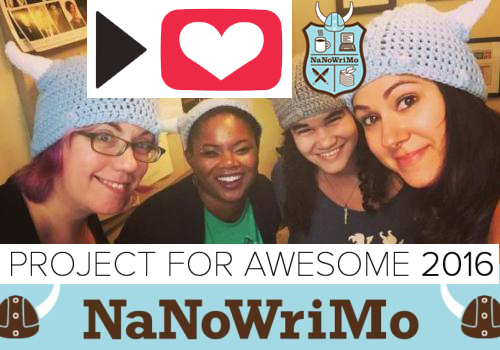
It’s Project for Awesome time! Project for Awesome, or P4A, is an annual fundraiser that raises money and awareness for all kinds of nonprofit organizations. We’re in the running for a grant of some of the money raised through P4A, and your vote can help us win.
It’s simple:
Search for “NaNoWriMo” on the Project for Awesome site.Click on each video.Select the “I’m not a robot” check box, then click the big VOTE box.Please vote for all the NaNoWriMo videos—voting is cumulative!
Why is this so important?Because we know that stories can change lives…
NaNoWriMo helps people discover that their stories matter, that they can achieve even more than they thought they could, and that they can build worlds. Your votes will help us keep creating experiences like these:
“NaNo was a life-changing experience for me. I feel more confident taking risks, letting go of perfect and trying something anyway. It has made my whole life more fun. It has given me a creative jump start and made me feel like I can be the creative person I want to be.”
— Leah, NaNoWriMo participant.
“I have been a middle school teacher for more than 20 years, and I can honestly say that nothing compares to writing novels together as a class. It’s the single most impactful academic experience that a student can share with their classmates. Writing novels builds confidence and motivation for students and helps them feel like they are a part of something that matters, something real.”
— Vicki Meigs-Kahlenberg, author and educator
“NaNoWriMo was one of the best things that ever happened to me…
Losing myself in a story was something new. Something wonderful. Even though I didn’t know it at the time, that was just the beginning.”
— Gwenyvere S., YWP participant
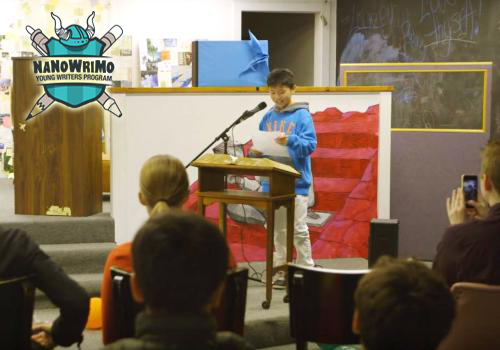 Our Thank You
Our Thank YouAs a thank-you for your vote and for your help in spreading the word, we’re offering a limited-time coupon code to the NaNoWriMo store! From now until P4A voting ends on Sunday, December 11 at 9 AM PST, take 10% off your order with the coupon code “VOTEP4A”.
Everybody wins! You vote for us, feel great about helping a nonprofit you believe in, and get a deal on awesome NaNoWriMo merchandise to celebrate awesomeness. It’s an awesomeness fiesta. A non-stop festival of awesome! A ride on the awesome express! You get the idea.
We can’t do it without you. Vote for NaNoWriMo today. Tell your friends. Help us change lives.
Sarah Mackey
Director of Community Engagement Awesomeness
December 7, 2016
The 4 Best Things to Do to Finish Your Post-NaNo Novel
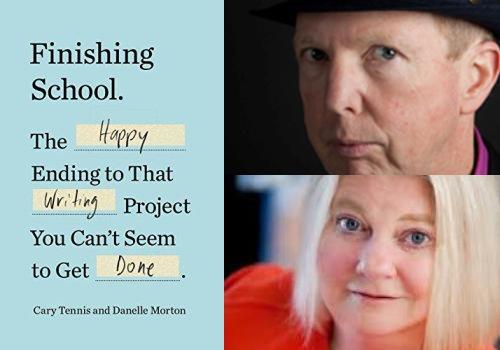
Everyone has a different NaNoWriMo experience, and trying to figure out what comes after can be difficult. Today, authors
Cary Tennis and Danelle Morton
share their tips for making sure that both your novel and your brain are ready for your next steps:
Congratulations on finishing NaNoWriMo!
More than however many words you wrote, in this month you have claimed the habits and the identity of being a writer. Be proud of what you’ve done. For an entire month you wrestled writing demon, and came out the winner. Bravo!
But the question might be lurking at the back of your mind: Now what?
For now, we advise you to practice some writerly self-care. Take a break, take a breath. Appreciate what you have accomplished. Revel in some quiet satisfaction over the holidays. Likely you wrote about some of the people you will be seeing in December. Take notes. And make a commitment to starting again on January 2.
In this pause, spend some time adjusting your state of mind to ready yourself for the work ahead. You’ve just written a long work of fiction in a short amount of time. Setting a word count and speeding toward it can unleash creativity, but the pace for the work ahead will be slower and will require a different commitment.
When you return to the draft of your novel, you will in essence be going to “Finishing School.” We are experts in finishing and we want to coach you through your second draft. Our book Finishing School: The Happy Ending To That Writing Project You Can’t Seem To Get Done, will be published by Tarcher/Penguin in January–the exact moment you should return to your novel.
Our book will include a full description of our simple, coherent method for managing time, emotions, and creative energy to get you across the finish line. But if you want to get started on the editing process early, here’s our advice:
1. Don’t ask anyone for feedback yet.You need to hear your voice first and that can take some time. Other people’s opinions can distract you, depress you, or make you defensive. Protect yourself from that.
2. As you look over your work, don’t judge yet.Approach your work in a kind and open way. Read your work aloud to yourself. Note the moments in it that you love.
3. Don’t worry whether your writing is “good” or “bad.”It’s a first draft. Inevitably, some of what you wrote is good, and some of it is bad. Don’t worry right now whether you have succeeded or failed, or whether you should have hope. You always have hope if you’re working on it.
4. Try the editing methods others use, and see what works for you.If you’d like a realistic preview of the work ahead for you, Cary Tennis is live blogging his process of completing a novel under deadline pressure. His deadline is January 10, the day our book is published. You can evaluate the decisions he’s making by following his progress.
You can also pre-order Finishing School, which will give you all the practical and emotional support you need to begin the work again, and to finish. Good luck!
Cary Tennis wrote the advice column “Since You Asked,” which appeared on Salon.com for twelve years. As an advice columnist, he never missed a deadline, but in his literary writing, he found himself stalled. Through the Finishing School method that he created, he completed his novel and now helps others through theirs in his writing workshops and international retreats.
Danelle Morton is a journalist and the coauthor of fifteen books. Morton has worked for The New York Times, was an associate bureau chief for People, and has been a foreign correspondent. She was a finalist for the PEN/USA Literary Nonfiction Award and the ASME magazine award in the public interest category. She has received investigative journalism grants from The Nation Institute and the George Polk Foundation.
December 5, 2016
Flipping the Script: Coders Become Novelists Using YWP
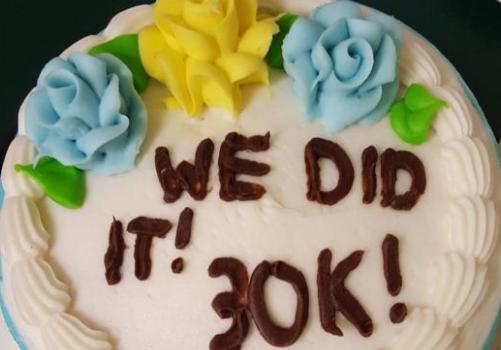
In addition to the main event every November, NaNoWriMo provides free creative writing resources to educators and young participants around the world through our Young Writers Program. This month, educator Meredith Towne shares the success story of her class:
Last November, I had the distinct honor and privilege of being the title character in a New Yorker Magazine-Talk of the Town piece called “Can An English Teacher Learn to Code?” I appreciated that I was able to speak up and out for young coders and for my school, the Academy for Software Engineering (AFSE). AFSE has been at the forefront the Computer Science for All initiative, work that Computer Science teacher Sean Stern says has made CS part of the core at our school–just like math, science, social studies, and English.
Fast forward one year. My section of the Senior Writing Seminar, composed of many kids I taught last year in AP Language and Composition, has a different theme each month, and as November is National Novel Writing Month we decided to write it into the new curriculum. I knew it was hard but not impossible, having attempted twice myself. I also knew the student version,The Young Writers Program, would provide the perfect supports for our first venture!
It was time to flip the script and for the coders to become the novelists. The kids wrote for hours to try to reach their goal 30,000 words. During November it was exciting to see them develop their stories, ideas, and to watch them struggle in the same way the NaNoWriMo writers around the world do each year. They were given free reign. It has been one of the most incredible classroom experiences I have witnessed since stepping into my first classroom in the fall of 2008.
“It was a perfect example of how mutual trust, high expectations, and intellectual freedom and creativity can lead to an incredibly rich learning experience for both students and teachers.”The Wednesday before Thanksgiving I asked the class to sit in a circle and craft a one minute book pitch. How would they sell their books? Their ideas were exciting and provocative. It was fascinating to hear about how they perceived their books and what their peers wanted to know more about. I was proud. I was excited. It was a perfect example of how mutual trust, high expectations, and intellectual freedom and creativity can lead to an incredibly rich learning experience for both students and teachers.
I did feel a sense of disappointment, not in my students, but in myself. I had set out with them at the beginning of the month with every intention of writing along with them. My life, not to make excuses, got the best of me. I made it to 10,000 words this time. I had been transparent, putting my writing up on the SMART board and writing along with them. I wanted my kids to see that I was willing to do the writing with them. That work bought me buy-in and energy. It created momentum. Walking the walk–at least for the first ten days–set the tone in the room and for the work.
On the 29th, Lindsey Christ, Education Reporter from NY 1, our local cable news channel, came to do a piece on students participating in NaNoWriMo this year. It was incredible to hear the kids talk about their work, their accomplishment, and working to complete what at times felt like an insurmountable task. Jose even hit his 30,000 word goal while she was there! You can watch the final piece here: Greenwich Village Students Participate in the National Novel Writing Month.
December 1st, 2016, meant celebration! Coders have become novelists. At the end of class after Jabari had reached his 30,000 words, he asked, “Ms. Towne, can I keep writing? Even though I hit my 30,000 words.” #TeacherWin

Meredith Towne is the Lead English teacher at the Academy for Software Engineering in New York City where she teaches World Literature, Senior Writing Seminar, and AP English Language and Composition. She holds a BFA in Theatre Production and Design from the University of Arizona and a MA in Educational Theater and English from New York University. Meredith loves to bake cookies when she is not grading papers in Brooklyn with her husband Charlie and their dog Rose. You can follow her on Twitter, on her personal blog, or on her professional blog.
December 2, 2016
Artist and author Jenny Williams has hand-lettered quotes from...
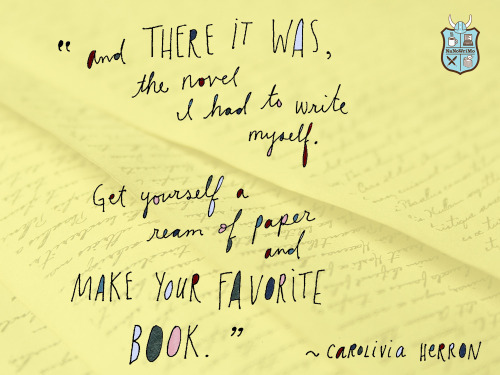
Artist and author Jenny Williams has hand-lettered quotes from this year’s Pep Talks! Check out her work at www.jennydwilliams.com, or follow her on Instagram @stateofwander.
This November, author Carolivia Herron wrote a Pep Talk specifically for our young writers on the YWP. Check out the rest of Carolivia’s Pep Talk here for a little post-NaNo inspiration!
December 1, 2016
30 Covers, 30 Days 2016: Bonus! Day Thirty-One

Every November, during National Novel Writing Month, thirty professional designers volunteer to create book cover art inspired by novels being written by aspiring authors from around the globe. Why? To encourage new, diverse voices, and help build a more creative world.
We’ve had such an amazing batch of artists contribute to 30 Covers, 30 Days this year. NaNoWriMo really wouldn’t be the same without them! Really all we can say is “THANK YOU!”–loudly and often.
30 Covers, 30 Days is presented in partnership with designer and author Debbie Millman.
One artist was so enthusiastic about creating covers for our participants that she chose two covers instead of one, so we have an extra bonus cover to share with you!
A young adult novel being written this November by YWP participant L. A. Kelly in the United Kingdom.
What would you do if you were Cupid?
Would you make the two most unlikely of people fall in love?
Would you cause rampage across the country and make sure that no one ever falls in love again?
Or would you make the person that you love the most fall in love with their biggest crush just so you can see them grow up and start their own family?
But what about you, Cupid, do you stay alone forever, or do you fall in love?
Well I don’t know the answer to any of those questions but I do know one:
What about Cupid?

Giorgia Lupi is an award-winning artist, information designer and researcher. Her work in information visualization frequently crosses the divide between digital and print, exploring visual models and metaphors to represent dense and rich data-driven stories. She is co-founder and design director at Accurat a data-driven design firm with offices in Milan and New York.
Giorgia received her M-Arch at FAF in Ferrara and she then earned a PhD in Design cum Meritum at Politecnico di Milano in 2014. She is co-author of the Dear Data book, published be Penguin (Uk) and Princeton Architectural Press (US). Her work is part of the permanent collection of the Museum of Modern Art. You can follow her on Twitter @Giorgialupi.
November 30, 2016
30 Covers, 30 Days 2016: Day Thirty

Every November, during National Novel Writing Month, thirty professional designers volunteer to create book cover art inspired by novels being written by aspiring authors from around the globe. Why? To encourage new, diverse voices, and help build a more creative world.
30 Covers, 30 Days is presented in partnership with designer and author Debbie Millman.
Read more about these NaNoWriMo 2016 novels-in-progress, and the cover designers, below.
Gaol fon UisgeA fantasy novel being written this November by participant P. J. Morgan in the United States.
Lily Logan doesn’t believe in fairytales. Or mermaids, for that matter.
After her life in service is ruptured by a scandal she will never live down, she escapes to a small Scottish town in the far north, where no one knows her name. There she finds a deeply superstitious people who have lost a cherished son to the dark waters.
‘Maighdeann mhara,’ they whisper in the streets.
Lily struggles to imagine how the colourful beauties in her childhood picture books could be responsible for cold-blooded murder, until she meets one face-to-face, and realises it is like nothing she could have ever imagined. But it might just be exactly what she needs. If she can survive.

Kenneth FitzGerald is an educator, designer, artist, and writer. He’s the author of Volume: Writings on Graphic Design, Music, Art, and Culture and produced The News of the Whirled, a novel in the form of 4-issue limited-edition magazine. As an artist, his work is included in public and private collections primarily in New England and New York, with artist books in the Franklin Furnace/Museum of Modern Art/Artists Books collection. Kenneth can be found at www.ephemeralstates.com.
9 Tips for Sharing Your Post-NaNo Novel With the World
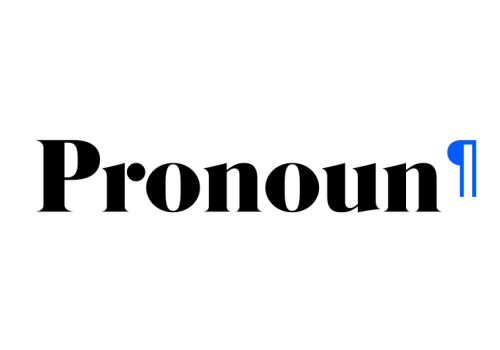
Every year, we’re lucky to have great sponsors for our nonprofit events. Pronoun, a NaNoWriMo 2016 sponsor, is a publishing platform for authors who want control over their creativity, rights, and earnings.
This year, they’re offering all Wrimos an exclusive e-book interior design–just sign up or log in with a Pronoun account to access. Today, they’ve shared some of their wisdom on what to do when you’ve finished your book:
Congratulations! You’ve typed “The End” on your NaNoWriMo project.
What’s next for you and your freshly-written novel? I’m an author (as well as Pronoun’s Author Community Manager), so I know how hard writing and the prospect of publishing can be. We at Pronoun have put together some key things to consider when embarking on your journey to literary acclaim:
1. If you do decide to publish, don’t publish right away.Every masterpiece needs editing. Just because you’ve typed “The End” doesn’t mean you’re actually finished. Yes, you’ve put down the words, but your book isn’t ready for readers yet. (Trust me, I know.)
2. Edit carefully, or hire an editor who can help you shape and polish your book.If you make the decision to publish, do your best to make sure your book—no matter how you publish—is as strong as any of the books in your genre. Ideally, you’ll hire a copy editor to ensure your book is properly punctuated and grammared. There are many different types of editors and plenty of places (including Pronoun’s own community site, The Verbs) to figure out what type of editor you might need.
3. Get a cover designed or design it yourself.You’ve worked hard on the words, and you want a cover that reflects your hard work. Whether you work with a designer or create your own, make sure your cover is comparable in quality to any other book a reader might click into their digital cart. (Pro Tip: Study the similarities of bestselling books in the same genre to get some ideas for popular techniques.)
4. Decide how to publish.Publishing on your own (also known as self-publishing) is a great way to be in the driver’s seat, and Pronoun can be your copilot. With the easiest-to-use and most professional tools on the block, Pronoun has made it easy to get your book noticed by people who want to read a book just like yours. Plus, it’s free.
5. Format your book.Your book’s readability is important—the pages should be worthy of the words they contain. You can spend money to have your book formatted by a professional, or you can create the files on your own. (Pro Tip: If you publish through Pronoun, all you need to do is select one of the seven gorgeous e-book layouts.)
6. Get your book out there.Selling your book on the major online retailers is the best way to find the most readers. The challenge, however, is that each retailer has their own method for uploading, formatting, and pricing your book. Worry not. It’s possible to upload once and let someone else handle the particular specifications. Pronoun, for example, ensures your book is available across Amazon, Barnes & Noble, iBooks, Google, and Kobo, which make up 98%+ of the e-book market.
7. Choose your price.How can you make the most money while also reaching the most readers? Just like there are trends in genres and book covers, there are trends in pricing. Too low a price and people devalue your book; too high and they won’t buy it. (Pro Tip: Pronoun shows you comparison prices for other books in your genre, which takes the guesswork out of pricing).
8. Send Advance Reading Copies to potential reviewers.Having reviews lined up for when your book goes on sale is a good way to maximize your discoverability. The way to do that is to send out advance reading copies, or ARCs, to bloggers and other reputable book reviewers. Pronoun has a one-click process to send ARCs out.
9. Get paid.If you go it alone, you can set up accounts with each vendor who sells your book. If you use a distribution service, note that most take a percentage of your earnings on top of the retailer’s cut. Pronoun is free, and after retailers take their cut, the rest is yours.

Megan Frampton is the Author Community Manager at Pronoun, a Macmillan company, and the author of nine historical romance novels. Her 2015 release, Put Up Your Duke, part of the Dukes Behaving Badly series, was selected by Amazon as one of 2015’s Best Romances. Her next series, the Duke’s Daughters, launches in July 2017. She lives in Brooklyn, New York, with her husband and son.
November 29, 2016
30 Covers, 30 Days 2016: Day Twenty-Nine
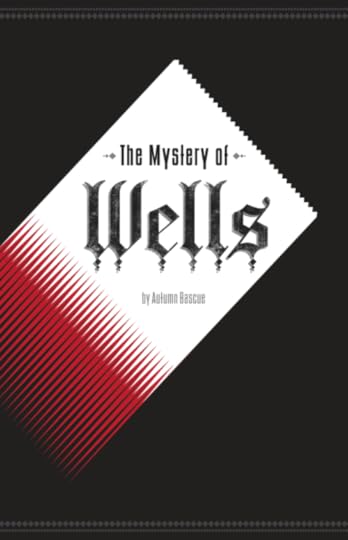
Every November, during National Novel Writing Month, thirty professional designers volunteer to create book cover art inspired by novels being written by aspiring authors from around the globe. Why? To encourage new, diverse voices, and help build a more creative world.
30 Covers, 30 Days is presented in partnership with designer and author Debbie Millman.
Read more about these NaNoWriMo 2016 novels-in-progress, and the cover designers, below.
The Mystery of WellsA science fiction novel being written this November by YWP participant Autumn Bascue in the United States.
Cassie Torres loved her little home in Portland, Maine. She loved her neighborhood, her school, and although her family wasn’t the best, she always had her friends to support her. But that’s all taken away from her when her parents force her to move to a small town in England called Wells with seemingly no motive.
She has no family, no friends, and no interest in staying. The little town seems strange enough as it is, but when she starts seeing impossible things happening before her very eyes, she starts to think that there was a reason that her family made her move. A very dangerous reason. And perhaps, it followed them there.
 Cover Designed by
Cover Designed by Maribeth Kradel-Weitzel
Maribeth Kradel-Weitzeli is an Associate Professor of Graphic Design Communication at Philadelphia University where she serves as coordinator for the Integrative Design Process course, an interdisciplinary, team-taught course required as part of the core sequence for all undergraduates in the Kanbar College of Design, Engineering and Commerce. This core sequence received the top honor in Core 77’s 2012 Professional Educational initiatives category. She is principal of the internationally award-winning firm, Kradel Design, and is a former President of the Philadelphia chapter of AIGA. She is a Sappi Ideas That Matter grant recipient. Kradel-Weitzel has an MFA from Tyler School of Art and a BA from The Pennsylvania State University.
Chris Baty's Blog
- Chris Baty's profile
- 63 followers



